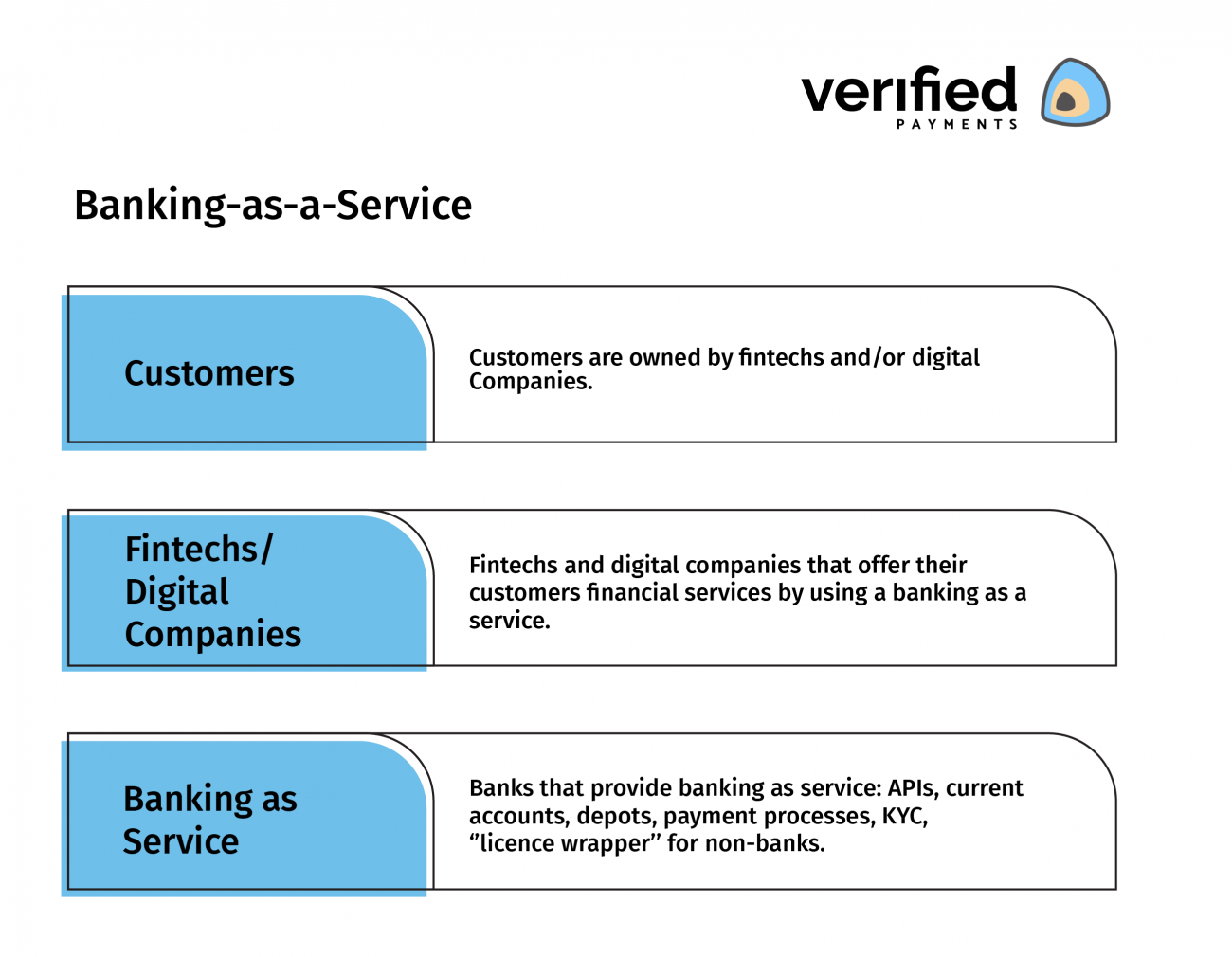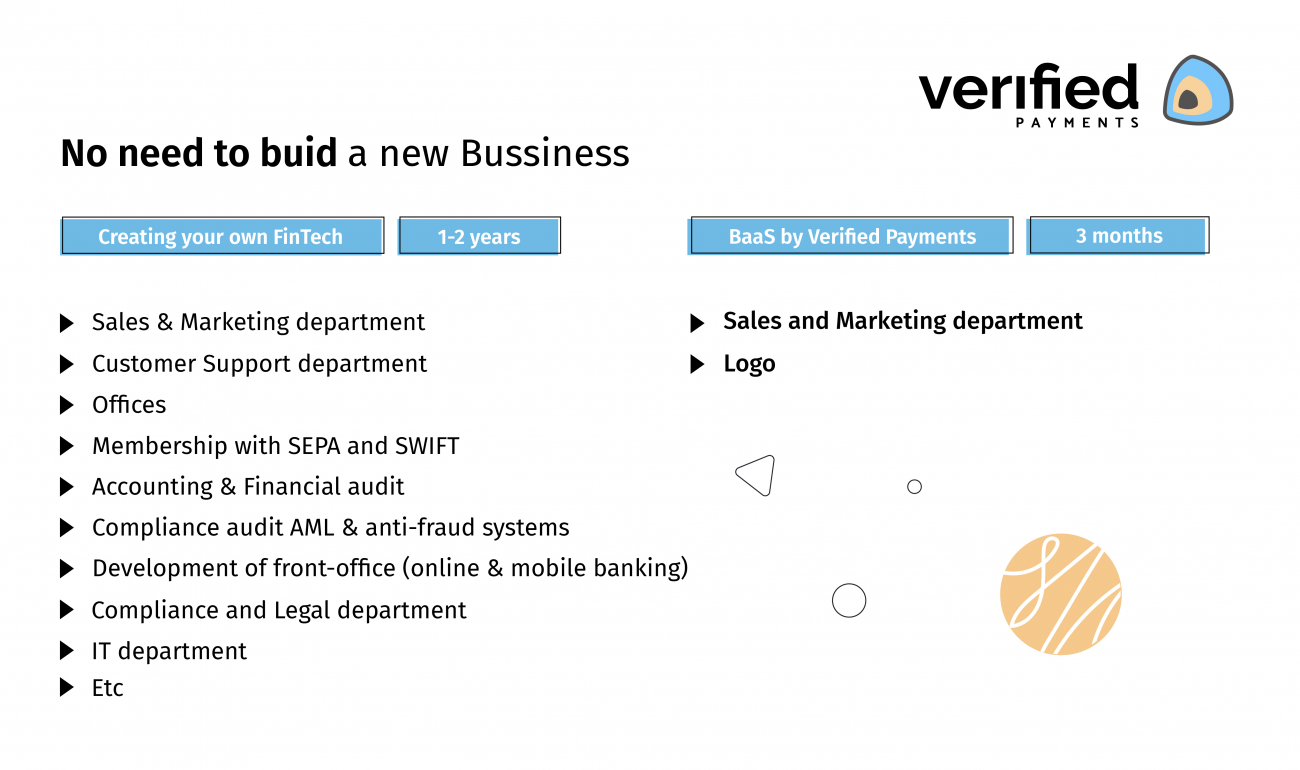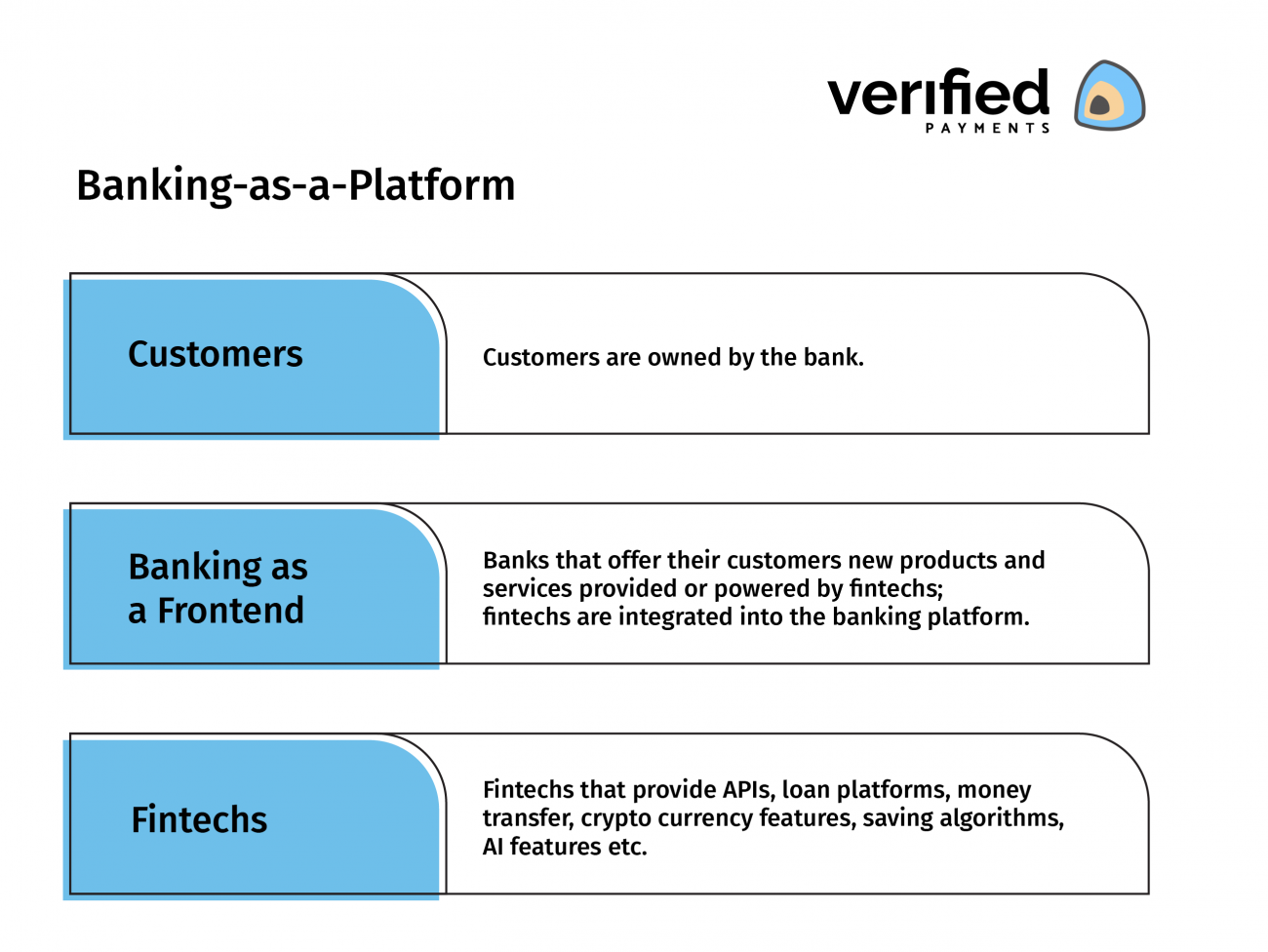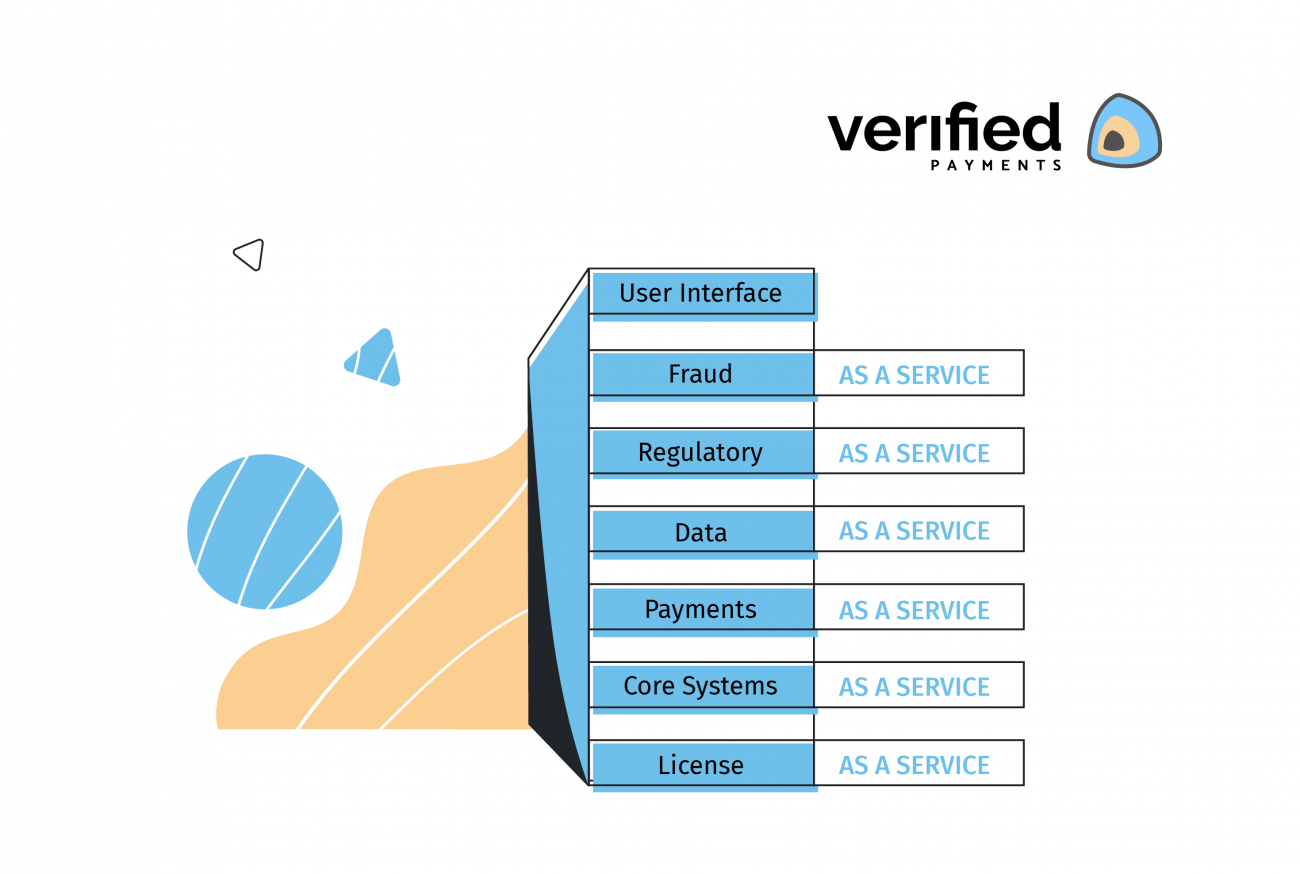Banking as a Service and Banking as a Platform. Sometimes these terms are used interchangeably. However, not only do they not mean the same, they actually have quite the opposite meanings. Let’s dive into the thrilling world of terminology to find out:
- how they differ,
- what their business models are,
- and, most interestingly, their applications in real-life situations.
What is Banking as a Service?
First, there is no single banking as a service definition. Yet, all of them seem to be pointing to this: Banking as a Service (BaaS for short) is a business model that enables companies to provide financial services usually associated with banks or financial institutions.
Did you know that a financial institution can sell its software, license, and/or services? This applies to both banks and fintech companies. A business that purchases these services becomes, in a sense, a financial institution.
Some may say that Banking as a Service is white-label banking and they would be right. You CAN start a bank almost solely by employing 3rd party services. You do not need to develop or own specific infrastructure – all you need is a brand and a business development team.

What is Banking as Service?
Banking as a Service examples
To understand banking as a service better, let’s have a look at a couple of real-life applications. This list is not definite and grows every day, hence we will analyze three banking-as-a-service use-cases:
- Platforms and marketplaces that have large user bases can benefit greatly by offering an e-wallet functionality via deposit accounts for their clients. For example, crowdfunding platforms can employ a BaaS solution to generate unique IBAN accounts for individual users and hit two birds with one stone. First, it contributes to a better user experience as they do not have to make a bank transfer each time they make a transaction on the platform as the funds are securely stored there. Second, for the platform, it is easier to convince customers to re-invest, which greatly increases customer retention.
- Almost any service provider can take advantage of BaaS and offer white-label payment cards for their customers. Clients benefit from customized card programs, while the business creates an additional stream of revenue.
- Yet, it is fintech startups that take the most advantage of BaaS services. They can utilize not only the infrastructure and functionalities of banks (also known as Banking Software as a Service) but also the data banks have about their customers. It opens up a new spectrum of possibilities for startups: from personal finance applications to real-time payments, from targeting niche clients to focusing on mass adoption. What is of the utmost importance for startups is that BaaS can shave off a ton of money and at least a couple of years in business and product development. Not to mention they would not need to have the capital for license acquisition. The sooner they enter the market, the happier their investors are.

Banking as a Service vs developing own product.
What is Banking as a Platform?
Banking as a Platform is opposite to Banking as a Service. As already established, the BaaS business model means that banking institutions enable fintech and non-financial businesses to provide financial services. Banking as a Platform (BaaP for short), on the other hand, enables fintech and non-financial companies to provide services to banking institutions.
Banking as a Platform means that a fintech or any other software/technology company can develop a service and “rent” it to a bank. Or in other words, Banking as a Platform means Banking as “a Platform for fintech and tech companies”.

How Banking as a Platform works?
Potentially, it is a triple-win situation:
- Bank customers win because they receive new and better services from a bank.
- Fintech wins because they sell their product to an established business for a profit.
- Banks win because they increase customer satisfaction, simultaneously saving money on development and support.
The latter part is extremely important. Almost 70 percent of the IT budget in European banks is aimed to keep bank operations running and only 30 percent to introduce new services or improve processes. It may look like a staggering amount of money but once you take into account historic circumstances and the complexity of banking software, it starts to make sense.
Angela Strange, the general partner at Andreessen Horowitz, said:
“While innovation in any industry is hard, innovation in financial services is particularly difficult. Many of these existing institutions have been around for more than 100 years and have a large brick-and-mortar retail footprint. As a result, it’s hard to cut costs and roll out new products quickly—think about the many long-term leases and thousands of employees that need to be trained across the country.”
Benefits of banking as a service and banking as a platform
Employing services of banking-as-a-platform providers allows banks and other financial institutions to focus on their core business. At the same time, they can keep delivering new products and services. The major benefits are:
- Reduced development time & costs.
- Maintenance costs are transferred to the developing company.
- Introduction of new services for customers.
- Strengthened position in the market.
- Increased customer satisfaction.
Banking institutions can use BaaP solutions in different ways. In a more competitive market, differentiation is of high importance and BaaP providers allow banks to identify their strength and build their ecosystem around it. In a less competitive market, they can take the opposite strategy. To become “every person’s bank” by offering all possible services on a single platform.
Whichever path a bank takes, almost every fintech idea can be adapted and introduced into the platform of traditional financial institutions. It means that listing ALL banking-as-a-platform examples is near to impossible but we can name a few:
- Ability to make a payment to a person while using their phone number.
- AI-backed automated investing platforms.
- Personal finance management tools.
- Online customer onboarding.
- Marketplace for insurance and other financial services.
Layers of banking as a service
Whichever business model you are considering, it is important to have in mind that BaaP and BaaS come in many shapes and sizes. For example, different banking-as-a-service providers offer different sets of services.
As the image below shows, BaaS can have multiple layers of services, and the client can choose to adopt a couple of layers, or a single layer into their business. This depends on the needs of a company.

Banking as a Service can have multiple layers.
Closing remarks
Whichever business model you are considering, it is important to have in mind that not all institutions are alike. In fact, BaaP and BaaS come in many shapes and sizes. To put it simply, different banking-as-a-service providers offer different sets of services. As the image below shows, BaaS can have all layers of services, a couple of layers, or a single layer. This depends on the needs of a company. The same applies to BaaP.
Both terms are relatively new and we strongly believe that in the upcoming years they will evolve and crystalize. Or new terminology will emerge.
We know for sure that (they want it or not) all banks, at least to some extent, are becoming banking platforms. Open banking initiative forces banks to give up their monopoly and open their systems to third parties. This process is also known as PSD2 in Europe.
Do not hesitate to contact us. We will share more insights into how banking-as-a-service and banking-as-a-platform can help. Especially for financial institutions, like, P2P lending and Crowdfunding platforms.
